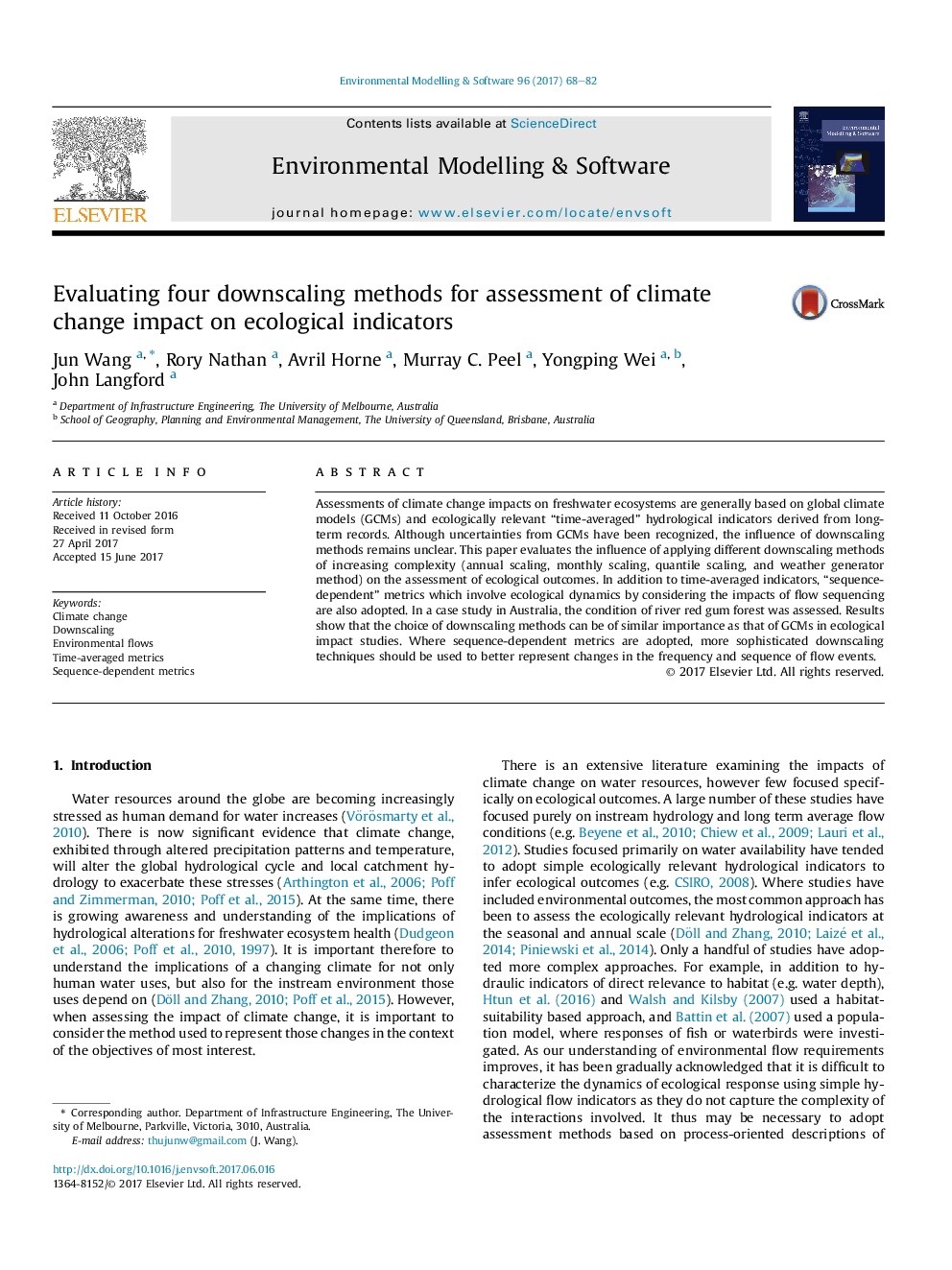| Article ID | Journal | Published Year | Pages | File Type |
|---|---|---|---|---|
| 4978239 | Environmental Modelling & Software | 2017 | 15 Pages |
Abstract
Assessments of climate change impacts on freshwater ecosystems are generally based on global climate models (GCMs) and ecologically relevant “time-averaged” hydrological indicators derived from long-term records. Although uncertainties from GCMs have been recognized, the influence of downscaling methods remains unclear. This paper evaluates the influence of applying different downscaling methods of increasing complexity (annual scaling, monthly scaling, quantile scaling, and weather generator method) on the assessment of ecological outcomes. In addition to time-averaged indicators, “sequence-dependent” metrics which involve ecological dynamics by considering the impacts of flow sequencing are also adopted. In a case study in Australia, the condition of river red gum forest was assessed. Results show that the choice of downscaling methods can be of similar importance as that of GCMs in ecological impact studies. Where sequence-dependent metrics are adopted, more sophisticated downscaling techniques should be used to better represent changes in the frequency and sequence of flow events.
Related Topics
Physical Sciences and Engineering
Computer Science
Software
Authors
Jun Wang, Rory Nathan, Avril Horne, Murray C. Peel, Yongping Wei, John Langford,
